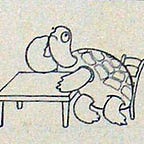139. Today in 1920s Turkey: 4 February 1924 (The Dirty Little Secret Behind Spats)
English
— When do you wear spats?
— When I am without socks, mon cher …Türkçe
— Ne vakit tozluk takarsınız?..
— Çorapsız olduğum zaman, mon cher!…
Comments:
Choices in personal attire, whether functional or fashionable, have long been satirized in Turkish cartoons. Although female fashion choices are more likely to be on the receiving end of humorous lampooning, male garments also attracted the attention of cartoonists. In the case of the present cartoon, spats are parodied as “cover-ups” for sock-less gentlemen. Spats were originally created as “dust guards” (or to use the Turkish term, tozluk) to keep socks and the tops of shoes protected from the elements. In use for several decades, they eventually graduate to “ornamental” status, becoming markers of fashionable, upper-class men until they largely fell out of use in the 1920s.
Using the example of spats, this cartoon serves to reveal what is behind the dapper, stylish facades of wealthy men. As accessories of fashion, their spats have shed one function (protection) only to take on an unintended new function (cover-up). Visually, the high-class status of the men is reinforced by their fine suits and even their noses, which are held quite high. The centrality of the “spats” is highlighted by their slightly oversize representation-making them impossible to miss. Moreover, the men are clearly located in an interior environment where, presumably, spats would be unnecessary… unless, that is, they are concealing something! In this way, through the vehicle of satire, the cartoon subverts the norms and forms of the affluent leisure classes. Far from being “over-dressed” or “over-accessorized,” the man is in fact, under-dressed, having neglected to wear the most basic of garments: socks.
Today in 1920s Turkey has considered four cartoons from the same issue of the journal Akbaba. The other cartoons from this issue of Akbaba can be accessed through the following posts/links:
Note: Finally, the use of “mon cher” is no mistake. Lacing language with foreign words was (and still is) a common method of establishing identity associations and “curating” one’s own image. In the case of these men, they are framed as cultural Francophiles. Their use of “mon cher” (my friend/dear), like their clothes, locates them in a certain class that is mobile, trans-cultural, wealthy, and/or educated.
Originally published at https://steemit.com on February 4, 2018.
